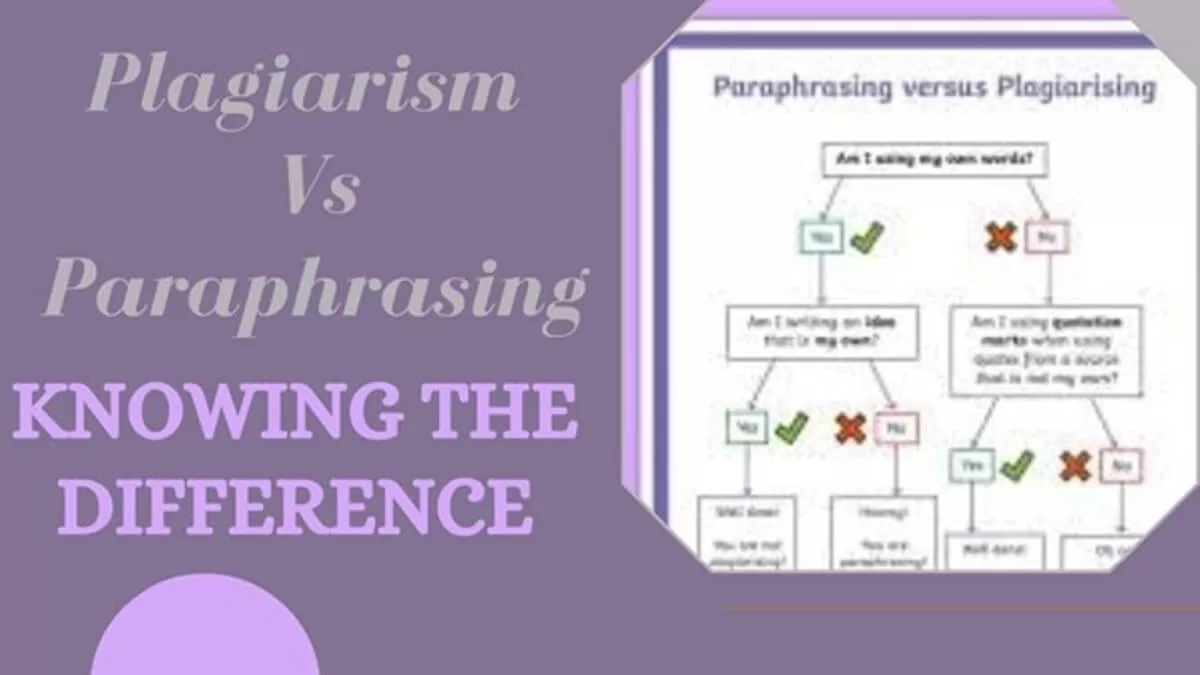With the vast amount of information available on the internet, it is easy to fall into the trap of plagiarism, intentionally or otherwise. Therefore, it is mandatory to know all the sources you’re using in your work.
Along with plagiarism, there’s another famous term known as paraphrasing which is summarising someone’s ideas using other words.
Both plagiarism and paraphrasing are well-known aspects of writing and you need to understand both to ensure the originality of your work.
In this article, we will explore the differences between plagiarism and paraphrasing and why it is essential to know the difference. We will also provide tips on how to paraphrase effectively and avoid plagiarism.
So, let’s dive in straight.
Table of Contents
Definition of Plagiarism and Paraphrasing
To understand plagiarism and paraphrasing, it’s important to know what these terms mean. So, here’s a comprehensive definition of both terms.
Plagiarism refers to using someone else’s work without giving proper credit. This act is considered unethical and can have serious consequences.
On the other hand, paraphrasing is the process of rewording someone else’s work while retaining the original meaning. Paraphrasing can be an effective way to use other people’s ideas while maintaining originality.
Examples of Plagiarism
So, what do you think plagiarism is in your writing?
The most blatant example is when you copy and paste content from an online article and claim it as your own without proper attribution. Here are some examples of plagiarism:
- Presenting someone else’s original idea as your own without giving them proper credit.
- Quoting someone directly without using quotation marks or citing the source.
- Using wording that is too similar to the original author’s without proper citation.
- Purchasing a paper written by someone else and submitting it as your own.
- Changing only the synonyms while keeping the sentence structure the same is an attempt to deceive a plagiarism checker.
Let’s understand this by an example:
Suppose, you come across an original sentence that reads “Plagiarism is a serious academic offense.”
If you use the exact words in your writing without proper citation, you are committing plagiarism.
Then you rephrase it: “Using someone else’s ideas or words without proper citation is considered a major academic offense. This is plagiarism.”
You are still committing plagiarism. This is because your wording and structure are too similar to the original author and you’re not giving proper attribution to him.
Examples of Paraphrasing
Paraphrasing is the act of restating information in your own words while still maintaining the original meaning. Although paraphrasing can look very similar to plagiarism, there is one crucial difference, and that is the citation of the original author.
For example, let’s say you come across a statement on xyz.com that reads “Plagiarism means using someone else’s work without giving them proper credit.”
If you want to use this information in your own work, you can paraphrase it by restating the information in your own words while still giving credit to the original author.
So, a possible paraphrase of the above statement could be:
“According to xyz.com, plagiarism is an act of copy-pasting someone’s work without proper in-text citation.”
This is a simple example of paraphrasing to make you understand the concept.
Paraphrasing is straightforward. All you need is to reword the original ideas and give the original author credit he deserves.
Tips to paraphrase effectively
So, how can you paraphrase like a pro? No doubt, paraphrasing is an important skill to avoid plagiarism, simplify complex language, and summarize lengthy text. Here are some tips to learn effective paraphrasing:
- Read and understand the source material: Before you begin paraphrasing, read the source material carefully and ensure that you understand the meaning of each sentence and paragraph.
- Identify the key ideas: Identify the main ideas and concepts that the author is trying to convey in the source material.
- Use synonyms and different sentence structures: Try to use different words and sentence structures to convey the same meaning. Use synonyms, antonyms, and related words to avoid copying the original text.
- Change the order of words and sentences: Rearrange the words and sentences in the text to create a new sentence structure that conveys the same meaning.
- Use citation: Even after paraphrasing, it’s important to give credit to the original source. Use citations to acknowledge the author and the source material.
- Practice: Paraphrasing is a skill that requires practice. Start by paraphrasing short paragraphs and gradually work your way up to longer pieces of text.
- Use a paraphrasing tool: The paraphrasing tool can help you rephrase sentences in different styles and tones. Also, it saves you the time and effort that you would spend on manual paraphrasing.
How to paraphrase common knowledge?
Paraphrasing with proper citation can be somewhat perplexing due to the concept of common knowledge. It refers to information widely recognized and accepted by the general public.
Such facts do not require citations.
But how can you determine if something falls under the category of common knowledge? Here are a few indicators:
- The fact is already familiar to your audience.
- The fact is universally acknowledged, such as Earth revolves around the Sun.
- You can easily find the fact in numerous common sources of information.
- The fact is a popular tale, like the love story of Romeo and Juliet.
- Your target audience possesses specialized knowledge that makes the fact commonly known within their field, even if it may not be known to the general public.
So yes, you can paraphrase the common knowledge without giving proper attribution to the source.
The Difference Between Paraphrasing and Plagiarism
Plagiarism and paraphrasing are similar in the sense that both involve using someone else’s ideas or words without giving proper credit.
Plagiarism occurs when someone directly copies and pastes another person’s work or ideas without citation. While paraphrasing involves rephrasing someone else’s words or ideas in your own words, but without properly citing the source.
However, paraphrasing may be seen as a way to avoid plagiarism, but if done improperly, it can still be considered plagiarism.
Citations will help you overcome this concern. To avoid confusion between plagiarism and paraphrasing, it’s important to always give proper credit to the source of information.
This can be done through proper citation and referencing.
Use AI Paraphrasing Tool to Ensure Proper Paraphrasing
Well, paraphrasing alone is not enough. It’s also essential to make sure that any paraphrased content is significantly different from the original work in terms of wording, sentence structure, and ideas.
So, when manual paraphrasing hits hard on you, an AI paraphrasing tool can have your back.
Paraphrasingtool.ai uses state-of-the-art artificial intelligence technology that rephrases the original ideas in different ways. It offers you different writing modes to choose from according to your writing needs.
Moreover, you can use the synonym-changing feature that not only broadens your vocabulary but also fine-tune your work to a high standard.
Use AI Plagiarism Checker for Plagiarism Detection
To succeed in writing as a profession or in academic pursuits, it is crucial to understand how to steer clear of plagiarism. Even pro writers may unintentionally commit various forms of plagiarism, which is why certain plagiarism checker tools can be beneficial.
Free plagiarism checkers, such as Plagiarismchecker.ai scans your papers to detect instances of plagiarism. Once you have finished writing your piece, it is advisable to input it into one of these checkers to review your content and confirm that it is plagiarism-free.
If plagiarism is detected, you can rectify the plagiarized sentences by adding a proper citation or rephrasing the sentence to keep plagiarism at bay.
Plagiarism and Paraphrasing: Final Thoughts
You know that using someone else’s exact words and claiming them as your own constitutes plagiarism. The process of paraphrasing, however, may not be as straightforward.
In any case, where you use someone else’s ideas or concepts, make some modifications, and present them as your own is paraphrasing.
But when you paraphrase without acknowledging the original source, it is still considered plagiarism. So, paraphrasing with proper attribution is a must.
In the end, plagiarism is a serious offense and can result in severe repercussions, especially in academic contexts. To avoid plagiarism, it is crucial to always cite your sources, especially when unsure. You may also use an AI plagiarism checker to scan your work and verify that you haven’t inadvertently committed plagiarism.




